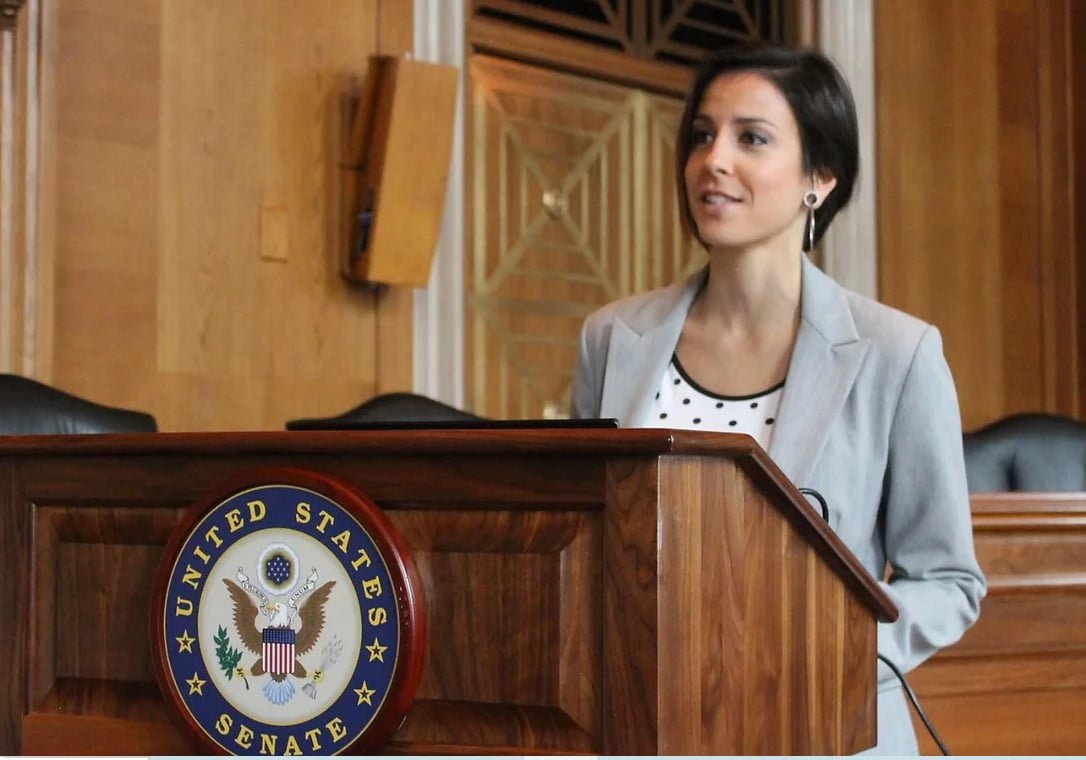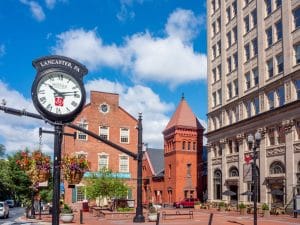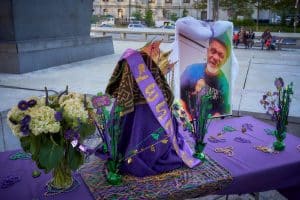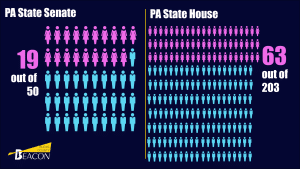While Bucks County is cracking down on massage parlors, California and New York City are loosening regulations on prostitution. Can Bucks county’s new regulations curb sex trafficking? And is Bucks County out of step with more progressive approaches? It’s a matter of politics, definitions and a way of thinking.
In January, the Bucks County Board of Commissioners passed an ordinance to tighten regulations for massage parlors. The regulations, which will go into effect in November, will restrict the hours massage parlors are allowed to stay open, dictate that they must keep their front doors unlocked during business hours, post all services and prices, keep a list of clients and require that customers enter by the front door. The announcement coincided with the annual January Human Trafficking Awareness Month, which President Barack Obama instituted in 2010.
“Yikes,” said Kate D’Adamo, a national consultant on sex worker issues and sex trafficking, when presented with Bucks County’s new rules. “These are not methods of dealing with human trafficking. We know what reduces human trafficking – rights for workers, multiple options for living wage jobs that meet peoples’ needs, outreach to vulnerable communities with a safe place where they can seek culturally competent support, and investments in community-based and worker-led organizations who are able to offer services. None of that is here.”
There were representatives from A Woman’s Place, the Bucks County Drug & Alcohol Commission and the Bucks County Coalition Against Trafficking at the ceremony, but there was no discussion of how those groups would be helped by the new regulations. Attempts to reach the Bucks County Coalition Against Trafficking (a division of NOVA, Network of Victims Assistance) were not answered. But, it is helpful to understand the Coalition Against Trafficking’s definition of trafficking, which is that used by the federal government.
Most people think of sex trafficking like this: people from elsewhere sold into slavery by criminals who hold their immigration papers and use physical intimidation, beating, rape, and other forms of coercion to force their participation, often because they don’t speak English.
Here is their official definition: the recruitment, harboring, transportation, provision, obtaining, patronizing or soliciting of a person for the purposes of a commercial sex act, in which the commercial sex act is induced by force, fraud or coercion, or in which the person induced to perform such an act has not attained 18 years of age (22 USC § 7102).
In newspaper and magazine stories announcing the new regulations about Bucks County massage parlors, Assistant County Solicitor Chelsey Jackman was quoted as saying, “… one of the questions that I was so often asked in dealing with human trafficking was, does it really exist in Bucks County? And it does.”
When people read that, most likely they assume the former definition, while in fact she may have simply been defining what happens in a massage parlor if it recruits women to provide sexual services and then bullies them, or even in a nail salon if technicians are underpaid.
So let’s stop to think about this. The providing of sexual services is a transaction between two people. If they are both willing participants, is that a crime?
Conservatives would say yes. (Mike Pence would definitely say yes.) But the New Manhattan District Attorney, Alvin Bragg, announced last month he would no longer prosecute prostitution, if it did not include any other crime. New York City eliminated the charge of loitering for the purpose of prostitution last year.
Also last year, the California legislature repealed the law for loitering for the purpose of prostitution, on the grounds that it was vague and subject to discriminatory interpretation. (Because of the way someone “looked.”) Technicality: it hasn’t been signed by the governor yet. Election year.
Why the shift? After passage of FOSTA/SESTA (the bill President Trump signed with the promise that it would eliminate sex trafficking by closing down Backpage type sexual ads) there was proof that it made sex work more dangerous and increased sex trafficking. In fact, Rep. Ro Khanna and Sen. Elizabeth Warren have both urged another look at Fosta/Sesta and the impact it has had on sex workers’ safety.
Bucks County has hired an investigator to see if massage parlors are following the new regulations. The investigator will work under the county health department and the Bucks County Consumer Protection Office.
Here are some hints: Online there are Bucks County “Rub Maps” with reviews of massage parlors offering sexual services. Those interested pay a fee to read the reviews, but the massage parlors do specify pricing, starting with a half hour, and the nationality of person doing the massage.
The new investigator can also go online and type in “Erotic massage Bucks County” and find the same massage parlors offering hot stone massage in ads in local papers, with the same map and address, now offering much, much more.
Or, another possibility, and perhaps a better solution to ending sex trafficking, the inspector could speak a few foreign languages, pay for an hour of massage, and spend that hour carefully and quietly discussing such things as coercion, rape and beatings, fair pay and then hand out literature about services available to anyone who might want to stop providing sexual services.
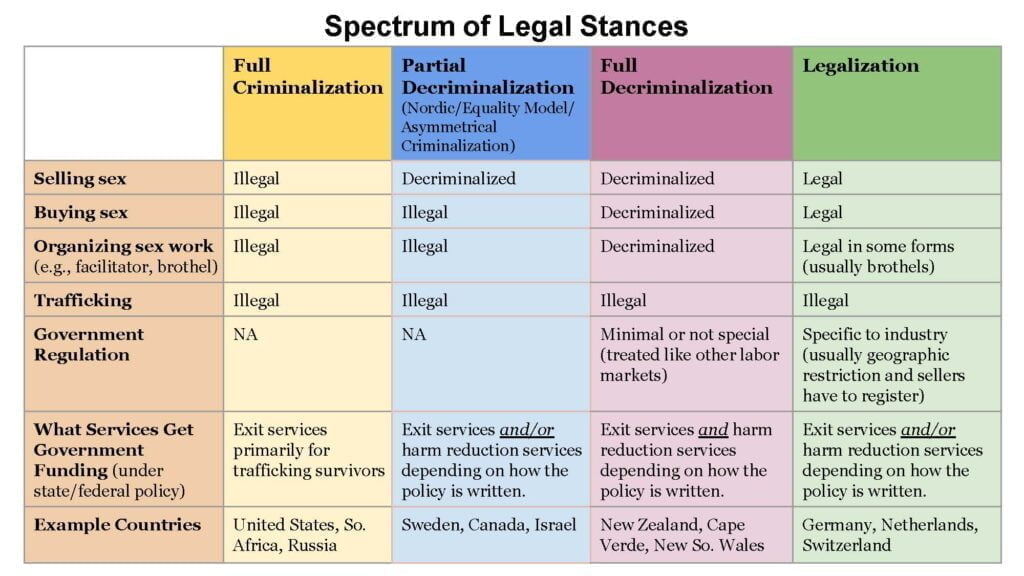
A recent virtual webinar on sex workers and sex trafficking at the Quinnipiac University School of Law invited as their guest speakers D’Adamo and Mary Speta, chief impact officer for Amirah, an organization that helps women exit the commercial sex trade. The webinar used the above chart to represent the various approaches that can be taken toward prostitution. The safest approach for sex workers, they said, and one that seemed to give sex workers the best opportunity to avoid arresst, eventually leave the business and find new work, was the Canadian model. No criminal law against sex workers, only those who might harm them, patronize them, or coerce them. Let’s give the last word to D’Adamo, who runs her own company, Reframe Health & Justice Consulting: “If you see an ordinance about trafficking that doesn’t come with more resources for workers and isn’t driven by workers telling you what they need, it’s almost a guarantee that the ordinance isn’t about human trafficking but about harassing businesses and vulnerable people.”
UPDATE February 18, 2022
Dominique Roe-Sepowitz, MSW, PhD, the director of the Office of Sex Trafficking Intervention Research (STIR) at Arizona State University thinks Bucks County’s new inspector may have a hard time talking to women and men who are unwilling sex workers in massage parlors. “Few people who work in illicit massage parlors self-identify as victims for a number of reasons. Primarily, they are terrified,” she says.
But she has these suggestions for bodies like the Bucks County Board of Commissioners to consider: “Things that seem to have some impact on regulating massage parlors include making sure the massage licensing board is sure that the person is a real massage therapist and has a license (not from one of the massage therapy programs that just prints it out for a price). Also, having all customers sign in and make a copy of their driver’s license. And laws can be passed to say if a massage parlor is listed on rub maps they lose their massage therapy license for 30 days.”
